Décoration for the Yellow House
Décoration for the Yellow House was the main project Vincent van Gogh focused on in Arles, from August 1888 until his breakdown the day before Christmas. This Décoration had no pre-defined form or size; the central idea of the Décoration grew step by step, with the progress of his work. Starting with the Sunflowers, portraits were included in the next step. Finally, mid-September 1888, the idea took shape: from this time on he concentrated on size 30 canvases (Toiles de 30), which were all meant to form part of this Décoration.[1]
.jpg.webp)
First idea: The Sunflowers, August 1888
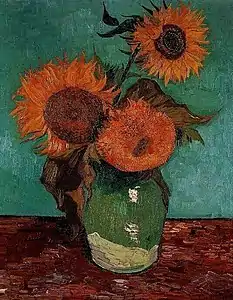 Vase with Three Sunflowers
Vase with Three Sunflowers
(Arles, August 1888)
Private collection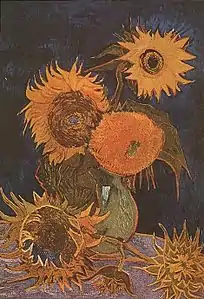 Vase with Six Sunflowers
Vase with Six Sunflowers
(Arles, August 1888)
Private collection, Japan, destroyed by fire in World War II on 6 August 1945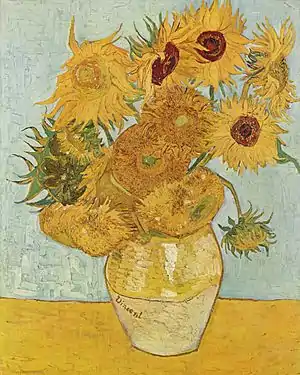
 Vase with Fifteen Sunflowers
Vase with Fifteen Sunflowers
(Arles, August 1888)
National Gallery, London
Second step: The Portraits, September - October 1888

 Patience Escalier
Patience Escalier
(The Old Peasant)
Private collection

Third step and definite solution: The Toiles de 30-Décoration, October - December 1888

%252C_Vincent_van_Gogh_(1888).jpg.webp)

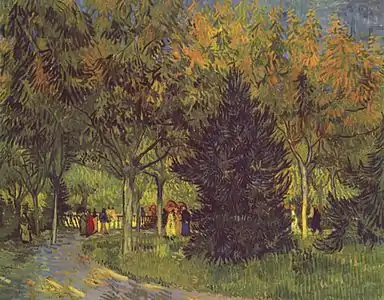 Public Garden
Public Garden
Kröller-Müller Museum, Otterlo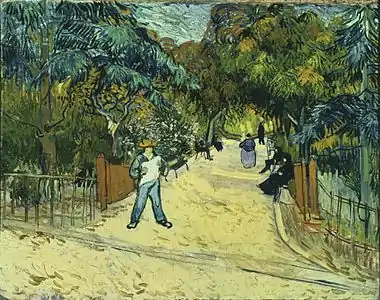 Public garden
Public garden
Phillips Collection, Washington D.C.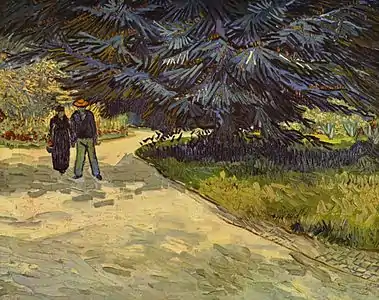 Garden of the Poet III
Garden of the Poet III
(October 1888)
Private collection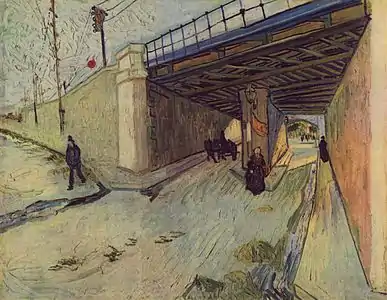 Railway Bridge
Railway Bridge
(October 1888)
Private collection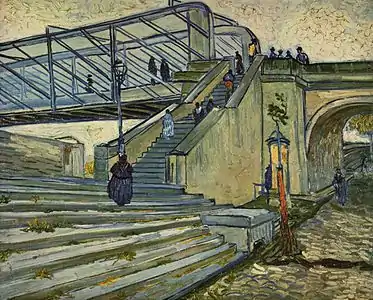
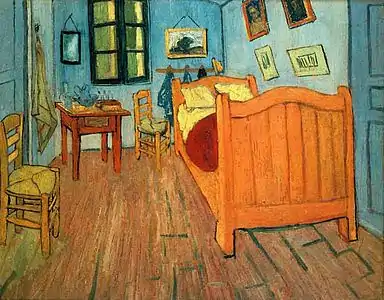



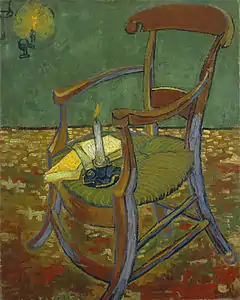
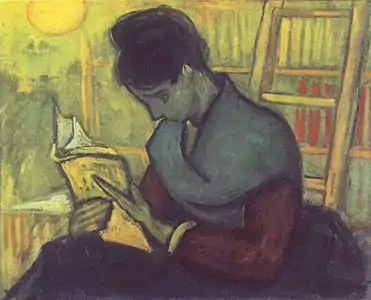 In the Library
In the Library
(November 1888)
Private collection



- For a related project by Van Gogh executed at the same time, in November/December 1888, see The Roulin Family series
Epilogue: The Toiles de 30, January - April 1889
Repetitions
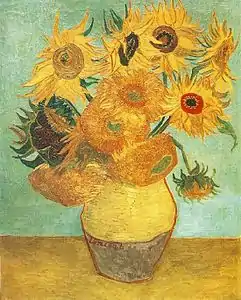
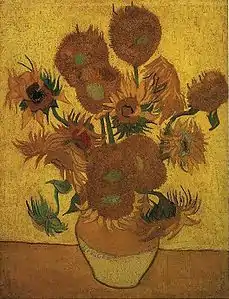
 Vase with Fifteen Sunflowers
Vase with Fifteen Sunflowers
(Arles, January 1889)
Sompo Japan Museum of Art, Tokyo La Berceuse
La Berceuse
Museum of Fine Arts, Boston L'Arlésienne
L'Arlésienne
Metropolitan Museum of Art, New York
Spring Subjects
Continuation
Later, in Saint-Rémy as well as in Auvers, size 30 canvases form the body of Van Gogh's work, and he continued conceiving series and groups of work based on this size. See The Wheat Field, the Copies by Vincent van Gogh and the Display at Les XX 1890, all from Saint-Rèmy, and the Auvers size 30 canvases.
Resources
Notes
- This fact, widely neglected for decades, recently seems to have become common knowledge; see Zemel, Schneede.
- The Red Vineyard, the only painting van Gogh sold during his lifetime
References
- Roland Dorn (1990). Décoration: Vincent van Goghs Werkreihe für das Gelbe Haus in Arles. Georg Olms Verlag. ISBN 978-3-487-09098-6.
